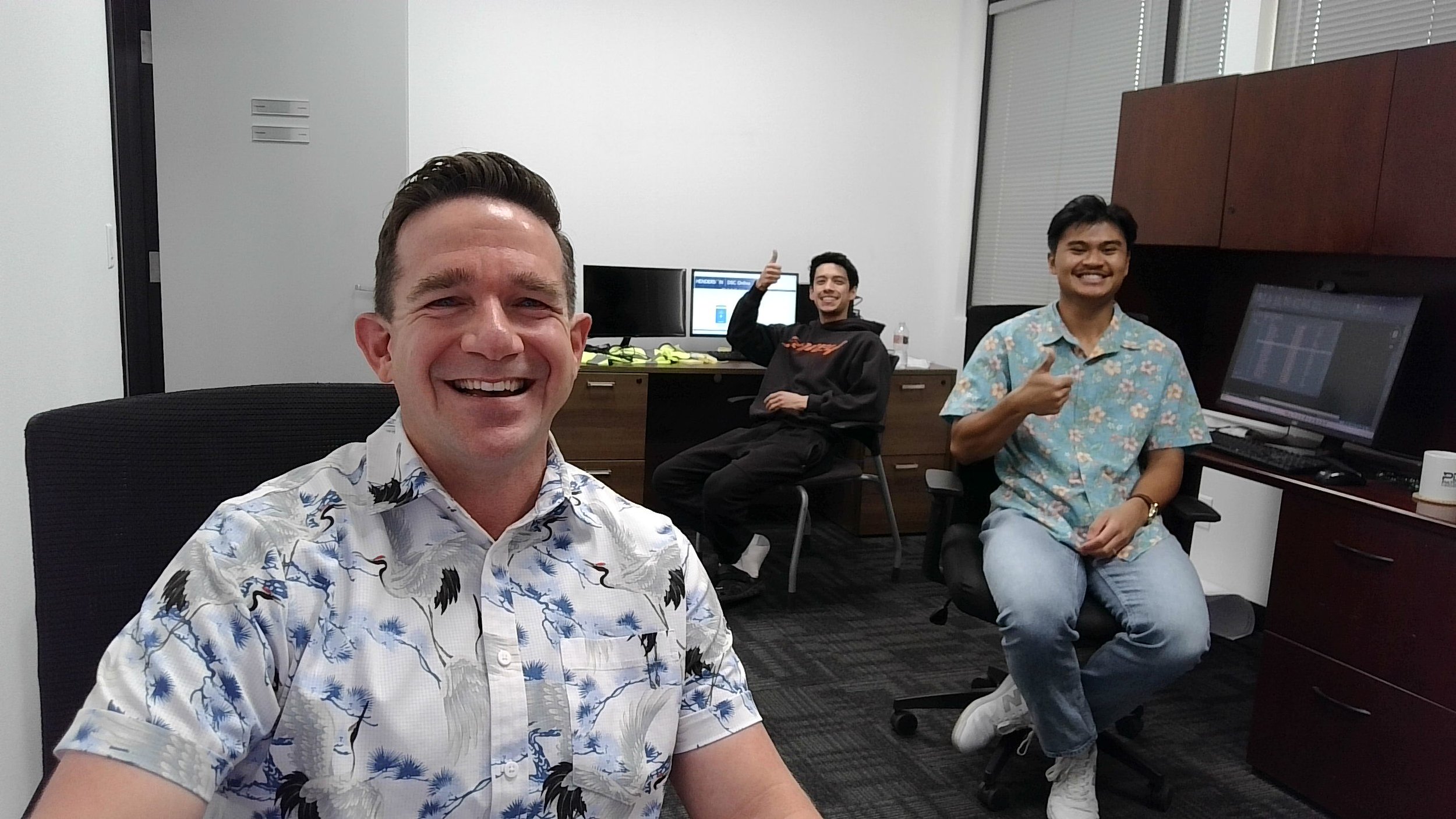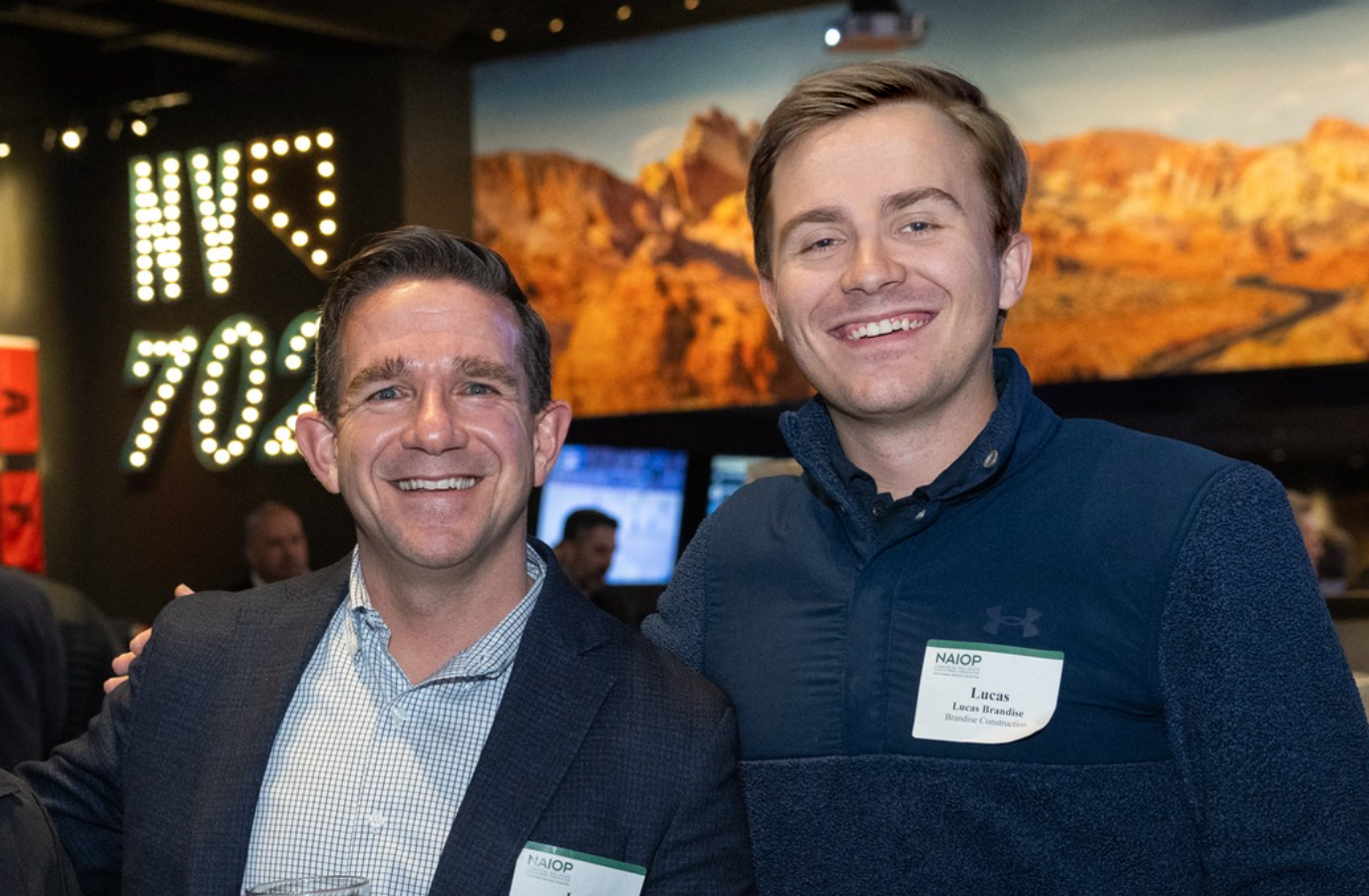Why Early Civil Engineering is a Game-Changer
A Conversation with Jesse Patchett, founder of Patchett Design Group
After more than two decades in civil engineering, Jesse Patchett decided to take the leap and build something of his own—Patchett Design Group (PDG). With a mission to deliver responsive, high-quality civil design and eliminate the bottlenecks that often plague development teams, PDG has quickly become a sought-after firm in the fast-paced Las Vegas market.
We sat down with Jesse to learn more about his decades of experience, the founding of PDG, and the driving forces behind successful land development. Whether you're a seasoned developer or just getting started, his insights offer practical takeaways you won’t want to miss.
what led you to found Patchett Design Group & what is your SPECIALTY?
I’ve been in civil engineering for over 20 years, working on everything from public infrastructure to private development. From early on, I knew I wanted to own a firm someday. When I became a partner at a larger company, I got a taste of what leadership felt like, but I eventually found myself frustrated by the red tape. I wanted more autonomy and I kept hearing developers complain about engineers being slow, unresponsive, or making costly mistakes. That’s when it clicked. I could build a firm that was the opposite of that—one known for being accurate, responsive, and easy to work with.
So, in 2025, I founded Patchett Design Group. We’re focused on high-quality civil design, expedited permitting, and being a dependable resource. I wanted to create a team that adds value, not delays.
We focus on private land development—multifamily, commercial, industrial, and mixed-use projects. A big part of our work is site civil design: grading, drainage, utilities, and permitting. We also support subdivision and small-lot infill developments that require a strong understanding of local regulations.
What are some NOTABLE projects you’ve had the opportunity to work on?
I’ve had the privilege to work on a wide range of projects—from water and wastewater treatment plants to airports, DOT roadway improvements, and levee upgrades for the U.S. Army Corps of Engineers that now protect tens of thousands of people from flooding.
I’ve also contributed to high-profile developments like the Cosmopolitan on the Las Vegas Strip and served as the Engineer of Record for the largest tidal wetland restoration project in the Sacramento–San Joaquin Delta.
Each project—whether large or small—represents an opportunity to serve and make a difference, and I’m grateful for every one of them.
What sets PDG apart from other civil engineering firms?
Responsiveness, accuracy, and mindset. We don’t just check boxes—we look for ways to make the project smoother for everyone involved. In this space, time is money, and small miscommunications can lead to big delays. Our team is structured to be nimble. We produce clean, buildable plans, we’re easy to reach, and we genuinely care about being a good partner. We show up prepared, follow through, and treat each project like it’s our own investment.
The Patchett Design Group Team
How early should civil engineers be involved?
As early as possible. ideally, that means during site selection. That’s when we can add the most value. Early involvement helps shape a site layout that actually works, reduces rework, and helps avoid surprises. We’re not just drafting plans—we’re strategic partners who want to help get your project out of the ground efficiently.
What’s the most overlooked factor in early project planning?
Site constraints—especially grading, drainage, utility availability, and access—are often underestimated. Many teams dive into design without fully understanding how the site actually functions. But if your grading doesn’t work, drainage is problematic, or utilities require major offsite improvements, it can derail both the budget and the timeline. These four factors—topography, drainage, utilities, and access—are the first things we evaluate when reviewing site feasibility. They quickly reveal risks and help guide smarter decisions. That’s why we always recommend involving a civil engineer early, even just for a quick feasibility check. It’s a modest investment that can prevent major surprises later.
How do you balance cost-effectiveness with long-term sustainability?
We practice “practical sustainability.” That means reducing costs now without creating future maintenance headaches. For example, we design balanced cut-and-fill sites to avoid expensive haul-offs and place drainage features where they’re easy to maintain. We also design utility layouts that minimize trenching and conflicts. Sustainability doesn’t have to cost more—it just has to be thought through early.
What’s your approach to challenging sites with tough grading or drainage issues?
Start with a deep understanding of existing conditions. We conduct detailed topographic and hydrologic analyses, then explore multiple scenarios to find the best balance between cost, constructability, and performance. Early coordination with architects and agencies is key so we’re all aligned on constraints and can move forward strategically.
What are some common permitting challenges, and how can teams avoid them?
Unclear land use rules, permitting delays from incomplete submittals, and utility coordination issues. Developers can stay ahead by engaging a civil engineer and architect early—ideally during site selection. We help identify red flags, suggest workarounds, and guide pre-app meetings to align expectations and avoid late-game surprises.
How do you define a successful collaboration between engineers, architects, & developers?
Open, early, and ongoing communication. Each discipline brings a different lens to the project—engineers typically focus on function, architects on form, and developers on financial feasibility. When all three collaborate from day one, we create efficient, buildable designs. It’s about staying aligned, flagging issues early, and respecting each other’s expertise throughout.
Can you share a time when early input from your team saved a client time or money?
Absolutely. Even during the proposal phase—before we’re officially hired—we’ll perform high-level site reviews. If we spot red flags like poor access, grading complications, or permitting concerns, we raise them right away. In several cases, we’ve helped clients avoid problematic parcels entirely or rethink layouts to reduce earthwork and access costs. One of the biggest red flags we’ve encountered was a site with no feasible utility access, along with others featuring seismic faults or major drainage channels. Thankfully, these were caught during due diligence, allowing the client to walk away before investing too much. That’s the value of early civil involvement—it saves time, money, and headaches down the road.
What do you wish more people understood about civil engineering and development?
I wish more people recognized just how much civil engineering influences the overall success of a project—even though our work is often invisible once construction is complete. Civil engineers are responsible for everything from drainage and grading to utility coordination, code compliance, fire access, and permitting—all while the site plan is still evolving. It’s not just about drawing lines on a plan; it’s about balancing technical constraints, agency requirements, and construction realities to keep a project feasible, buildable, and on schedule.
One area where this really comes into play is permitting. I’ve found that many developers underestimate the time and complexity involved in navigating agency approvals. A realistic understanding of permitting timelines—especially in places like Clark County—can go a long way in aligning expectations and avoiding costly surprises. In fact, I’ve received so many questions over the years that I put together a “lunch and learn” presentation to walk teams through the process. It’s been a great way to reduce frustration and keep projects moving.
Want to set up a permitting lunch and learn for your team? Send me an email—I’d be happy to share what we’ve learned.
What’s unique about civil engineering in Southern Nevada?
Southern Nevada offers some unique advantages—one of the biggest being that many areas don’t require on-site stormwater detention. That translates to more usable land, and out-of-state developers are often pleasantly surprised when we tell them they can forgo basins and reclaim that space. However, soil conditions and flood zones can vary significantly across the Vegas Valley. That’s why it’s so important to involve both a civil engineer and a geotechnical firm as soon as possible. Chances are, we’ve already reviewed the site—or a nearby one—and can offer valuable insights before you commit to a purchase.
what advice would you give developers trying to accelerate timelines in Las Vegas?
Engage your civil team early. Prioritize clear, ongoing communication. Know your agency timelines. And build a team that isn’t just technically strong but invested in keeping your project moving forward.
In our conversation, it became clear that early civil engineering involvement is key to avoiding costly surprises—especially when navigating Southern Nevada’s unique site conditions and permitting processes. Jesse Patchett and the team at Patchett Design Group are redefining what it means to be a proactive partner in land development—blending technical expertise with practical, responsive service. If you’re looking for civil engineers who do more than just draw plans, PDG will most definitely be your next call. Paired with Brandise Construction’s local expertise and quality craftsmanship, they offer a seamless path from planning to construction. Together, PDG and Brandise Construction are committed to helping developers save time, reduce risk, and get projects built right the first time.





